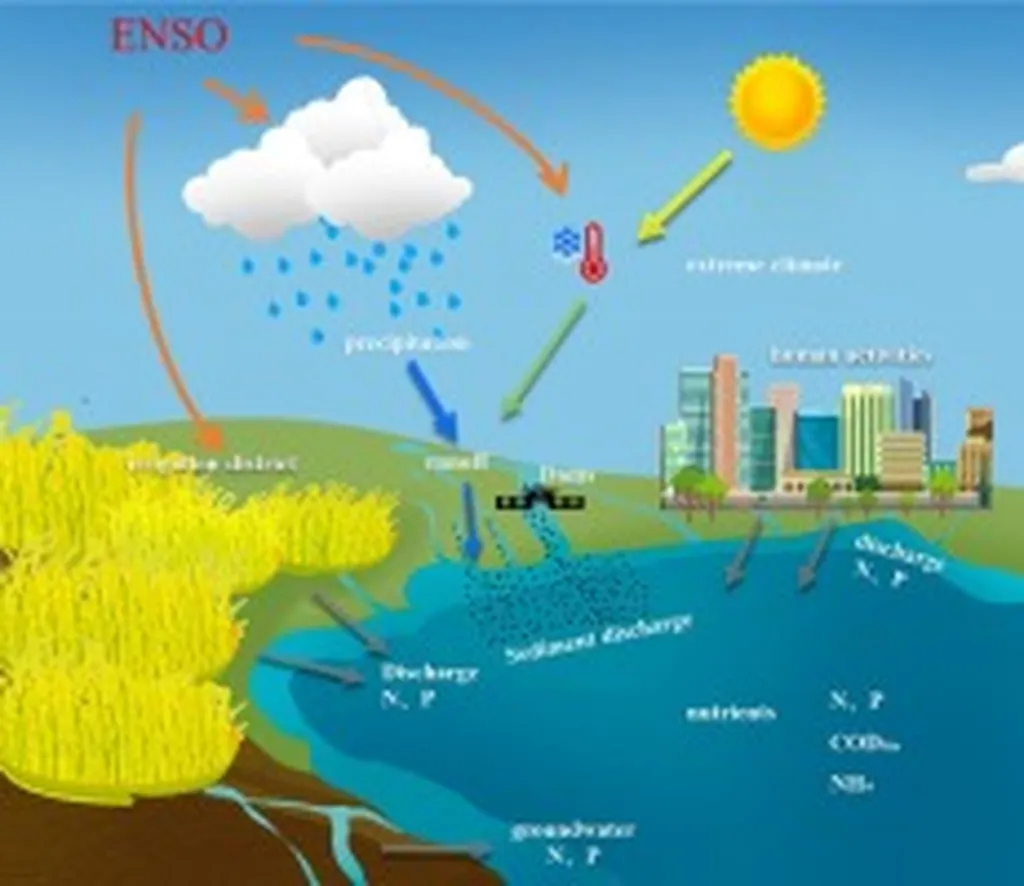In the heart of China, Poyang Lake stands as a vital ecological barrier within the Yangtze River Basin, playing a crucial role in regional environmental stability. Monitoring its water quality is essential, particularly the concentration of total phosphorus (TP), a key indicator of eutrophication and water health. However, traditional monitoring methods have faced significant challenges due to sparse data and the complexities of inland water bodies. A groundbreaking study led by Luanbin Yin from the Key Laboratory of Mechanism, Prevention and Mitigation of Land Subsidence at Capital Normal University in Beijing, China, has developed an innovative framework to address these issues, potentially revolutionizing water quality management and offering valuable insights for the energy sector.
The research, published in the IEEE Journal of Selected Topics in Applied Earth Observations and Remote Sensing (translated as “IEEE Journal of Selected Topics in Applied Earth Observations and Remote Sensing”), introduces a novel approach to remote sensing retrieval of TP concentrations. By integrating a two-stage, parameterized perturbation based on aquatic optical characteristics, the team has enhanced the accuracy of multispectral reflectance data (B02–B12) and TP distribution patterns through spectral feature optimization. This method expands the dataset by a remarkable 14 times, providing a more comprehensive understanding of TP dynamics in Poyang Lake.
At the core of this framework is a stacking ensemble learning model, which employs LightGBM and Extra Trees as base learners and a Random Forest meta-learner. This sophisticated approach achieves a nonlinear fusion of TP estimates, significantly improving the accuracy of predictions. The results are impressive, with a root mean square error (RMSE) of 0.0148 mg/L and an R-squared value (R²) of 0.6121, marking a 6.02% improvement over the best single model (Extra Trees: RMSE 0.0159 mg/L, R² 0.5519).
“Our framework not only enhances the accuracy of TP monitoring but also provides a reliable technical support for water-quality management in ecologically sensitive regions,” said Luanbin Yin, the lead author of the study. The spatial analysis revealed higher TP concentrations (0.15–0.213 mg/L) along the northern and southern margins of the lake, influenced by agricultural runoff and urban wastewater, while lower values (0.062–0.12 mg/L) were observed in the central waters. These findings align with field measurements and historical pollution patterns, underscoring the robustness of the model.
The study also delved into the multidimensional driving mechanisms behind TP heterogeneity. Pearson correlation and principal component analysis (PCA) indicated that TP variations are driven by a combination of exogenous inputs and endogenous releases, regulated by hydrometeorological factors such as evapotranspiration, precipitation, and temperature. This intricate interplay highlights the need for a holistic approach to water quality management, one that considers both local and regional influences.
The implications of this research extend beyond environmental monitoring. For the energy sector, accurate and reliable water quality data is crucial for managing hydropower facilities, ensuring sustainable agricultural practices, and mitigating the impacts of industrial activities. By providing a more precise and efficient method for monitoring TP concentrations, this framework can support better decision-making and policy formulation, ultimately contributing to the sustainable development of the region.
As the world grapples with the challenges of climate change and environmental degradation, innovative solutions like this one are more important than ever. By leveraging advanced technologies and interdisciplinary approaches, researchers are paving the way for a more sustainable future. The study led by Luanbin Yin represents a significant step forward in this endeavor, offering a powerful tool for water quality management and environmental stewardship.

